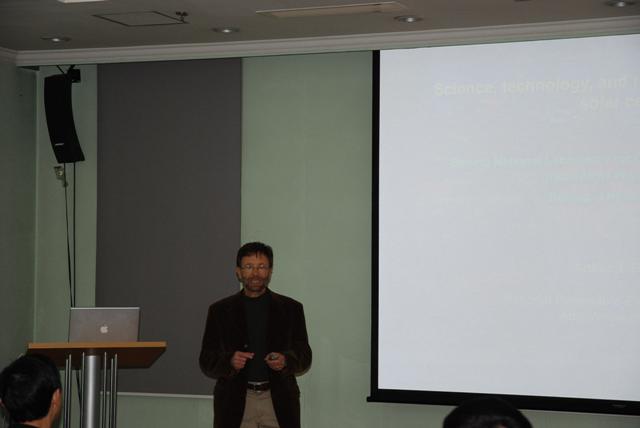光电化学系列讲座(十二) 2009-1-7
中国可再生能源学会、光化学委员会光电化学系列讲座(十二):


报告人:Arthur J. Frank
Chemical and Biosciences Center, National Renewable Energy Laboratory (NREL), U.S.A.
Dr Frank is a Principal Scientist at the National Renewable Energy Laboratory in Golden Colorado, USA where he has been since 1979. Prior to joining NREL, Dr Frank was a postdoctoral fellow at the University of California (Calvin Lab) at Berkeley (1976-78) and the Hahn-Meitner Institute in Berlin (1975-76) where he worked in the field of molecular and colloidal solar photochemistry. His graduate school research at the University of Florida centered on radiation chemistry and gas phase kinetics. He received his B.A. from the University of Colorado at Boulder (1968). His research interest covers basic and applied research on the direct conversion of solar photons to fuels and electricity using quantum and non-quantum nanoscaled semiconductors, photonic band gaps, chemically tailored electrode surfaces, conductive polymers, novel electrolytes, and photocatalysts. Dr Frank is the author or co-author of more than 100 scientific publications and holds 5 US patents on the topics mentioned above. He has organized and chaired several international and US symposia. He has chaired or served on several DOE review panels and served as a member of the US DOE Visiting Team under US-Israel Scientific Cooperation Agreement and as a delegate to the International Energy Agency Executive Conference.
报告题目:Science, Technology and the Future of Sensitized Solar Cells
内容提要:
I will be discussing several topics relating to sensitized solar cells. Sensitized solar cells are a relatively recent class of inexpensive solar cell devices that have attracted the attention of the photovoltaic community. These cells can be classified as bulk heterojunctions or mesoscopic injection cells. Such cells are characterized by their nanoporous (pore diameter < 100 nm) architecture defined by two continuous, interpenetrating charge-conducting networks constructed from either a combination of organic and inorganic materials or entirely inorganic materials. A distinguishing feature of sensitized solar cells is that both light absorption and charge separation occur near the extensive interface (e.g., surface area >1000 times the projected area) between the two materials. Sensitizers can range from molecular dyes to traditional inorganic semiconductors to quantum-confined structures. Although there are a number of versions of sensitized solar cells, the prototype is the liquid-electrolyte-based dye-sensitized TiO2 nanoparticle solar cell (DSSC or Gr?tzel cell), which is the principal focus of my talk. I will discuss their operating principles, advances that have been made in the basic understanding, recent commercial developments, and future research opportunities. I will present the results of our studies on DSSCs aimed at understanding the reasons for the slow electron transport and the strong light-
intensity dependence of the electron diffusion coefficient. While it is generally accepted that multiple trapping is a major determinant of the rate of electron transport, the spatial location of the traps that limit transport in TiO2 nanoparticle films is controversial. In principle, these trap sites could be located on the surface of particles, in their bulk, or at grain boundaries between particles. Studies addressing this issue will be highlighted. Introducing architectural order to a TiO2 nanostructured film and chemically modifying the surface properties of films are expected to have significant influences on the cell performance. I will discuss the effect that oriented nanotube film architectures have on the collection efficiency of electrons and the light harvesting properties of DSSCs as well as the mechanism by which molecular adsorbents can enhance the photovoltage of a cell. These topics and others will be discussed.
